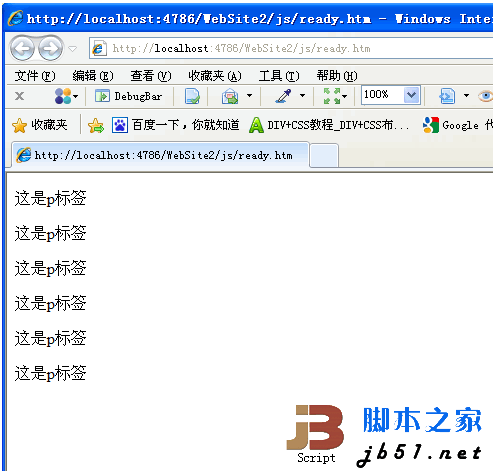1 つ目は通常の配列 (整数のインデックスを持つ配列) です:
$.map(arr,fn);
配列内の各要素に対して fn 関数を呼び出して、fn を 1 つずつ処理します。関数は最終結果を処理して返します。 新しい配列
var arr = [9, 8, 7, 6, 5, 4, 3, 2, 1];
var newarr = $.map(arr, function(item) {return item*2 });
alert(newarr);
$.each(array,fn) は fn 関数を呼び出して配列の各要素を処理しますが、戻り値はありません
var arr = [9, 8, 7, 6, 5, 4, 3, 2, 1];
$.each(arr, function (key, value) {alert("key:" key "value:" value); });
関数のパラメータを省略することもできます。このとき、走査された現在の要素の値を取得できます。
var arr = [9, 8, 7, 6, 5, 4, 3, 2, 1];
$.each(arr, function() {alert) (this) });
配列の場合、通常、
var arr = { "jim": "11", "tom": "12", "リレイ": "13" };
$.each(arr, function(key, value) {alert("名前:" key "年齢:" value);
もちろん、パラメータなしで関数を使用して走査することもできます。
このクラス データを次のようにサーバー側から取得できる場合:
サーバー側:
<%@ WebHandler Language="C#" Class="Handler" %> ;
System を使用;
System.Web を使用;
System.Collections.Generic を使用;
public クラス ハンドラー : IHttpHandler void ProcessRequest (HttpContext context) {
context.Response.ContentType = "text/plain";
人物 p1 = 新しい人物 { 年齢 = "22"、名前 = "tom" };新しい人 { 年齢 = "23"、名前 = "ジム" };
人 p3 = 新しい人 {年齢 = "24"、名前 = "リレイ" };人> {p1,p2,p3};
JavaScriptSerializer = new JavaScriptSerializer();
context.Response.Write(s);
パブリック クラス 人
{
パブリック 文字列 名前 { get; セット; }
}
パブリック ブール IsReusable {
get {
return false;
}
}
}
最初に 3 人の人物オブジェクトがインスタンス化され、次にコレクションに入れられ、最後にコレクションが文字列にシリアル化され、クライアントにストリーミング;
クライアント:
コードをコピー
コードは次のとおりです:
コードは次のとおりです:
< ;script src="../myjs/jquery-1.4.2.js" type="text/javascript">
The effect of running in the browser For:

After the dom is loaded, text is dynamically added to each p element. First, $("p") gets the collection of p tags, which is equivalent to document.getElementByTagName in Javascript, but here What is obtained is an array of Jquery objects, so that Jquery has the inherent implicit iteration function. The subsequent text ("This is the p tag") operation iterates to each P tag. We can also explicitly call each function to display the array of Jquery objects obtained by iteration. The following code can also achieve the above effect:

